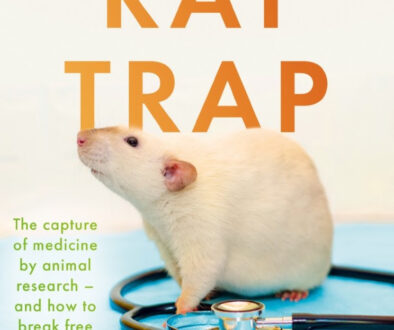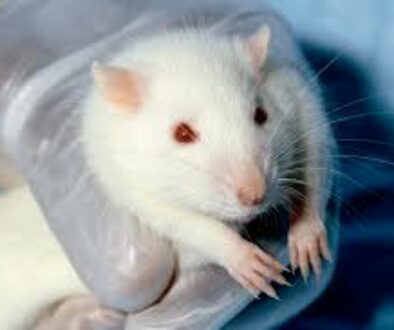It’s time to end the use of non human primates in research and testing

The European Commission has requested the Scientific Committee on Health, Environmental and Emerging Risks (SCHEER), to update the scientific Opinion on the need for non-human primates in biomedical research, production and testing of products and devices.
I therefore wish to submit the following Scientific Opinion for consideration by the SCHEER on the use of non-human primates (NHPs) in regulatory toxicology in general, and on the use of NHP for the safety testing of breast implants, in particular.
The current SCHEER position is that : “Due to their genetic proximity to humans and highly developed social skills, the use of non-human primates in scientific procedures raises specific ethical questions and practical problems in terms of meeting their behavioural, environmental and social needs in a laboratory environment. Furthermore, the use of non-human primates for scientific purposes is of the highest concern to the citizens. As a result, the use of non-human primates attracted significant attention during the review of the Directive.” (1, 2).
General remarks on the use of NHPs in regulatory toxicology :
- As the EC has requested an update concerning Scientific Opinion, future SCHEER position papers should point to the growing debate within the scientific community on whether NHP use is sufficiently evidence based to be a cornerstone of biomedical research and testing (3, 4).
- Under general remarks, I would like to include the following document, entitled “Ending the use of non-human primates in toxicity testing” endorsed by 32 medical scientists and researchers, including Professor Michael Balls (past director of the European Centre for the Validation of Alternative Methods) and Dr Shirley McGreal, founder and director of the International Primate Protection League (see pdf).
- An analysis of the Bateson Review of research using nonhuman primates
Abstract: An analysis of the use of nonhuman primates in biomedical research in the UK, the Review of Research Using Non-Human Primates (the “Bateson Review”) was released in 2011. The review was applauded, to varying degrees, by most of the stakeholders in the controversy over using nonhuman primates in biomedical research. However, there has not been a scientific analysis of the review. In this paper, the Bateson Review is examined for both methodology and the science relevant to the use of nonhuman primates in biomedical research. The relevant science includes complexity theory, evolutionary biology, genetics, empirical evidence regarding the reliability of interspecies extrapolation, and the value of basic biomedical research in general in making discoveries that lead to human treatments. The authors of this paper conclude that the Bateson Review does not meet the criteria for a scientific assessment, in part, because it fails to consider the current science that impacts on the practice of using animals, in general, and nonhuman primates, specifically, in biomedical research. This lack of scientific consideration has legal and ethical ramifications. Since the Bateson Review fails as a scientific evaluation, the ethical and legal recommendations that are based on science are also suspect (see pdf).
- The European Citizens’ Initiative “Stop Vivisection” that was heard in the European Parliament on 11 May 2015 represents the views of more than one million EU citizens. The Initiative “Stop Vivisection” highlights some of the major deficiencies in Directive 2010/63/EU, and most notably the fact that the Directive continues to endorse the animal model paradigm despite overwhelming evidence to the contrary, based on current scientific knowledge (5).
- There is no evidence that the use of NHP in research and testing is predictive of human outcome. In contrast, there does exist peer reviewed scientific evidence that the NHP is not predictive of human outcome with respect to drugs and disease (6, 7, 8).
- The NIH (National Institutes of Health, USA), the biggest biomedical research organisation in the world “will no longer fund biomedical research on chimpanzees”. This statement by NIH director Francis Collins, made on 18 November 2015 (9) is in response to a scientific report commissioned previously from the Institute of Medicine (IOM, USA) that also included scientific evidence presented by the Physicians Committee for Responsible Medicine (10).
- The current view of monkeys as “the next best thing after a chimpanzee” is scientifically untenable. Humans and chimpanzees are separated by about seven million years of evolution, whereas humans and monkeys are separated by about 25 million years of evolution. If the NIH is prepared to stop funding chimpanzee research for ethical as well as scientific reasons, where is the justification to use monkeys ? See for example the following peer reviewed article : “Commentary : lessons from the analysis of non human primates for understanding human aging and neurodegenerative diseases” (11).
Specific remarks on the use of NHPs or other animals for the safety testing of medical or cosmetic devices, in relation to regulatory toxicology:
“The PIP scandal: an analysis of the process of quality control that failed to safeguard women from the health risks” authored by Victoria Martindale and Andre Menache (published by the Journal of the Royal Society of Medicine (2013)).
The main findings of this paper are that animal testing was, at best, inconclusive :
“The final report acknowledged the conclusion from the European Union’s Scientific Committee on Emerging and Newly Identified Health Risks (SCENIHR) but carried out no further investigations: “in the case of PIP implants, when the limited available clinical information is taken together with the findings from tests of the physical and chemical properties of the shell and silicone, and of the in vivo irritancy test, some concerns are raised about the safety of PIP breast implants as the possibility for health effects cannot be ruled out.”
Concluding remarks:
The use of NHPs in biomedical research, production and testing of products and devices has never undergone independent scientific audit. The phasing out of chimpanzees in biomedical research is the result of strong public opinion against their use as living test tubes. It is also the result of a recognition by the scientific community that chimpanzees are no longer essential for the study of human disease and drug development, in an age of the human genome (pharmacogenomics, toxicogenomics), induced pluripotent stem cell technology, bioengineering (as illustrated by the Weiss Institute at Harvard :organ-on-a-chip ; body-on-a-chip), and Integrated Testing Strategies, all of which combine to achieve more reliable and relevant data for humans than animal experiments.
The total replacement of NHPs in research and testing will be greatly accelerated by a paradigm shift in EC spending, away from animal based research and instead towards modern, human based technologies, illustrated by the US National Research Council publication “Toxicity Testing in the 21st Century: a Vision and a Strategy” (12).
Finally, there is an urgent need for the ethical review process relating to animal experiments use to undergo a major transformation, to allow greater public participation and hence greater transparency (13).
Sincerely,
Dr Andre Menache BSc(Hons) BVSc Dip ECAWBM (AWSEL) MRCVS
References:
- http://ec.europa.eu/health/scientific_committees/call_experts/call_experts_primates_2016_en.htm
- http://ec.europa.eu/health/scientific_committees/scheer/docs/scheer_q_001.pdf
- http://www.bmj.com/content/348/bmj.g3719
- BM 2014; 348 doi: http://dx.doi.org/10.1136/bmj.g3387 (Published 30 May 2014): BMJ 2014;348:g3387
- http://www.stopvivisection.eu/en
- https://peh-med.biomedcentral.com/articles/10.1186/1747-5341-4-2
- https://tbiomed.biomedcentral.com/articles/10.1186/1742-4682-9-40
- http://www.medsci.org/v10p0206.htm
- https://www.nih.gov/about-nih/who-we-are/nih-director/statements/nih-will-no-longer-support-biomedical-research-chimpanzees
- http://www.pcrm.org/media/news/statement-on-ending-nih-chimpanzee-experimentation
- http://journal.frontiersin.org/article/10.3389/fnhum.2016.00033/full
- http://dels.nas.edu/resources/static-assets/materials-based-on-reports/reports-in-brief/Toxicity_Testing_final.pdf
- http://www.ncbi.nlm.nih.gov/pubmed/23149098




